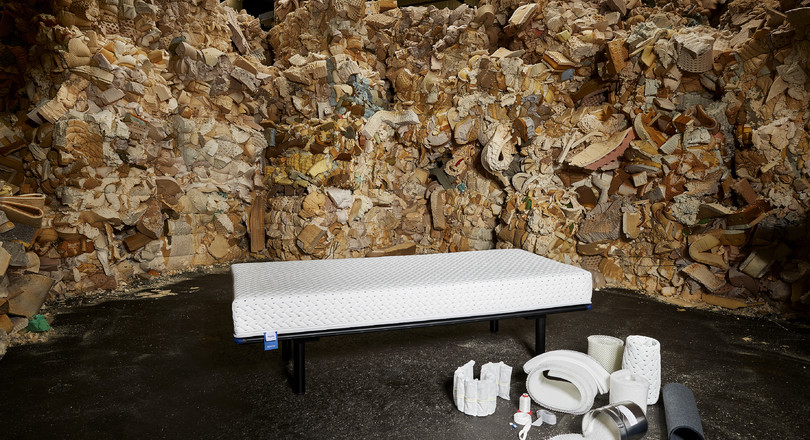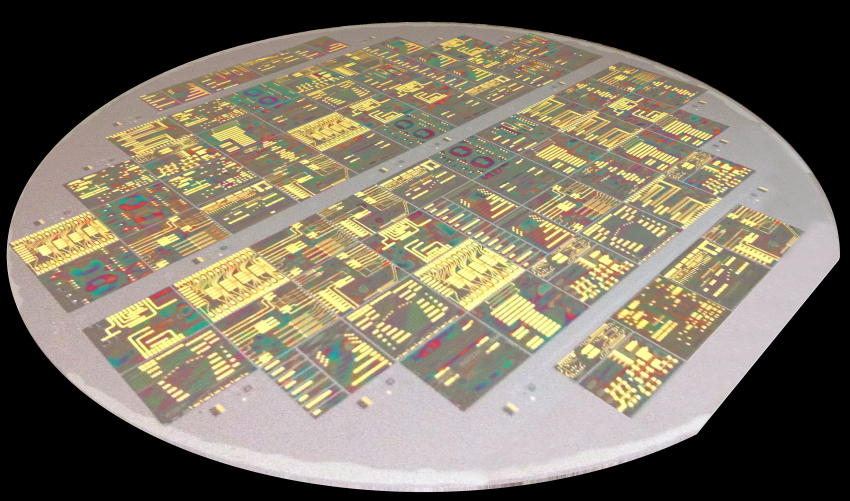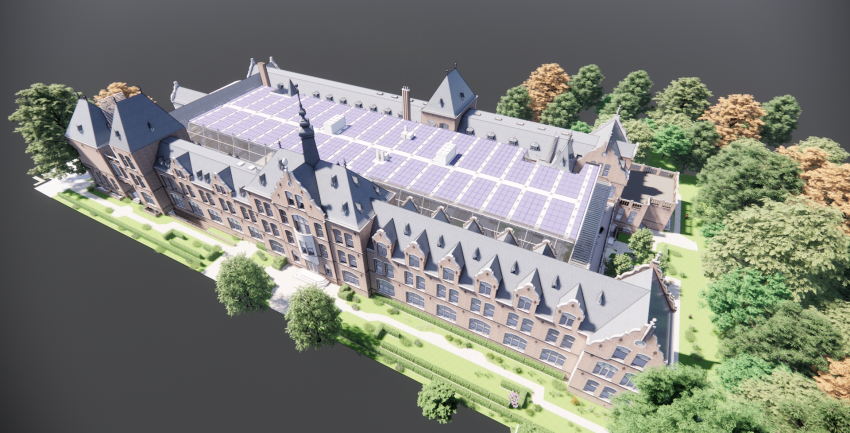
A first in Circularity for Auping
Mattress manufacturer Auping and joint venture DSM-Niaga have succeeded in developing a mattress in accordance with the principles of the circular economy. They made their scoop public on Tuesday.
Every year, one and a half million mattresses are disposed of in the Netherlands alone. Waste processors don’t like them because all the fire-resistant substances used are not easy to incinerate, so they yield little in a furnace. Moreover, they are often so large that they first have to be shredded, where the steel springs also cause problems.
The Dutch government therefore started the Icon project ‘Matrassen’ to encourage the industry to come up with solutions. However, a completely circular mattress initially appeared to be unfeasible. Foam, which is the main component in a mattress in addition to steel, cannot be recycled into new mattresses. The adhesive used is literally another sticking point, as the components of a mattress are glued together 'for eternity'.
The missing link
In late 2017, Auping entered into a partnership with joint venture DSM-Niaga. The latter had developed an adhesive that could be ‘neutralised’ with microwave or infrared radiation. 'That was the missing link we were looking for at Auping. All kinds of opportunities suddenly appeared that we hadn’t been able to foresee previously,’ according to product group manager Mark Groot Wassink.
One of these possibilities was making a mattress with replaceable parts. When the contact layer is worn, which is often a reason to get rid of a mattress, you can now call Auping. The company will send a technician with an infrared light to fit new parts.
The foam in the modular and circular mattress has also been replaced by polyester fibres, exactly the kind of textile that Niaga’s carpet adhesive adheres well to. When the fibres are worn, they can be melted down and made into new polyester yarns. An additional advantage is that a mattress made with polyester textile ventilates much better than one made with foam.
Lease beds
Auping has been collecting old mattresses for many years, and converting parts of them into judo mats. 'Five years ago, we were at the forefront of sustainability in this area,' says Groot Wassink. ‘Now, however, we realise that the judo mat is the final phase of the material, and when its life ends it has to be sent to the incinerator. What we want is for all raw materials to be fully reusable at the same level, because only then can you really make a difference in the world. That’s precisely what we’ve now managed.’
The new mattress will be available from next year. Initially, only a universal model of particular interest to hotels will be marketed, but later more models will become available, including some for consumers. According to Auping, the price will only be slightly higher than that of a traditional mattress.
Mattress leasing will also be introduced, where the user pays for usage of the mattress, but it remains the property of Auping. At the end of its life, it then returns to Auping to be made into a new mattress.
'We want to tackle the issue of waste in the world,’ says Henk-Jan Udding, Innovation Director at DSM-Niaga. ‘Both humankind and the planet would benefit if this bed became the new standard.’
If you found this article interesting, subscribe for free to our weekly newsletter!






